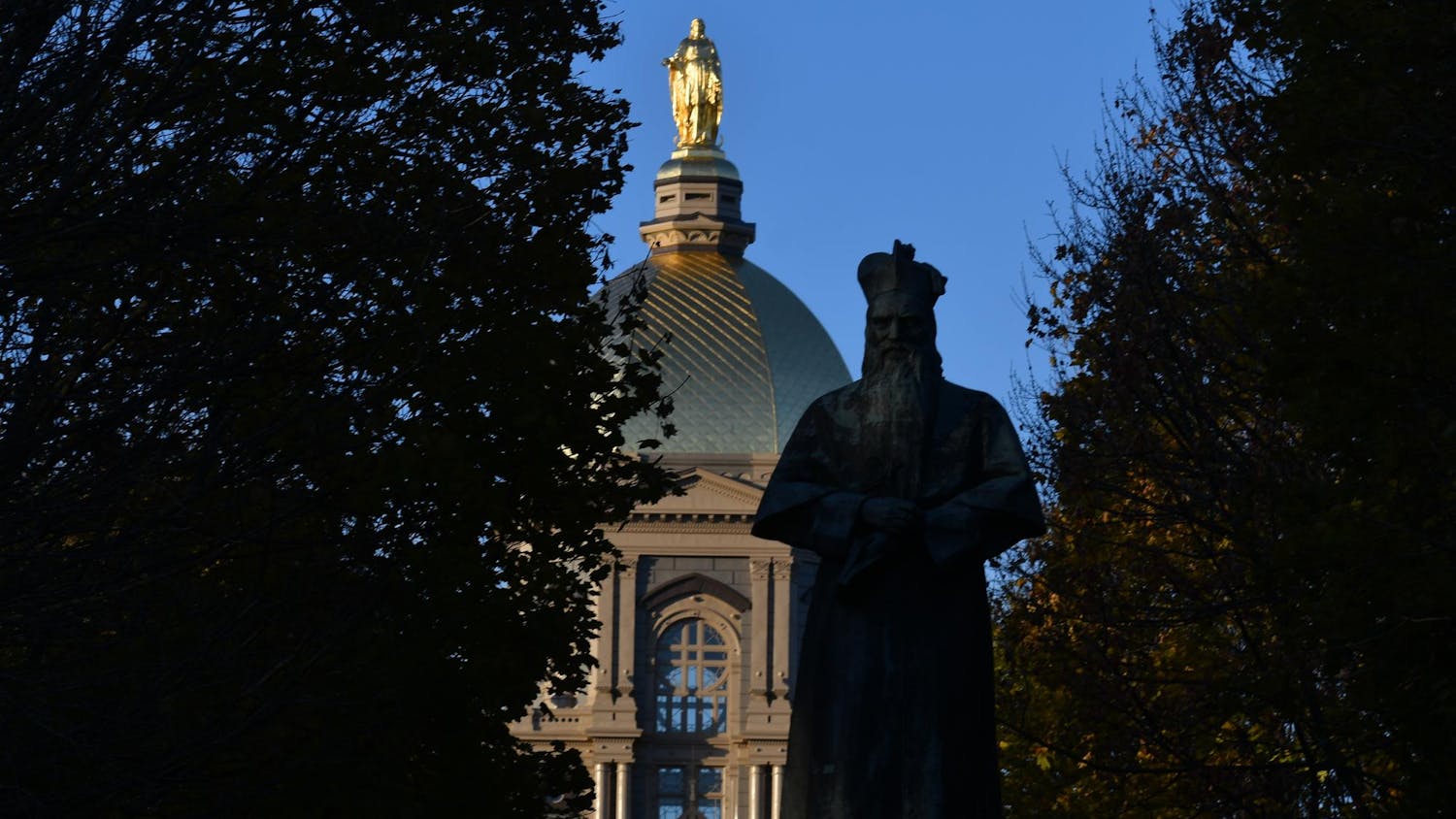Provost John McGreevy hosted the first of two town halls Thursday afternoon to answer questions from undergraduates about the University’s recently published ten-year strategic framework. The framework lays out Notre Dame’s vision to be the best Catholic research university, “on par with but distinct from” other leading private universities.
“What was nice for me was how clear Notre Dame's mission is, and how little controversy, in a way, there is in defining what Notre Dame should be over the next 10 years,” McGreevy said. “The world doesn't need another University of Chicago. The world needs the best possible Notre Dame.”
In June, Notre Dame was invited to join the Association of American Universities (AAU), a national consortium of 71 preeminent research universities. Since the University’s admission, it has been learning from meetings and “informal conversations” with other AAU members, McGreevy said.
McGreevy said the strategic framework sets up ways for the University to compete academically with its peers in the AAU, while maintaining a distinct Catholic character. Notre Dame is the only university in the AAU with a religious affiliation.
“Universities, including Notre Dame, are very good at setting up boundaries. We have centers and programs and divisions and colleges and schools,” McGreevy said. “And a lot of those boundaries are necessary for degree programs … but some of them aren't so necessary and some of them, we have to get better at crossing — really thinking and collaborating as an institution.”
Additionally, McGreevy said the University will continue to invest in a diverse student body.
“So there are a little bit over 1 billion Catholics in the world right now, and over half of them are people of color living in the Global South. The modal Catholic in the world does not look like me,” he said. “That is the future — demographically speaking — of the Catholic Church, and we felt very strongly that Notre Dame needs to better embody that reality.”
McGreevy mentioned several policies the University is evaluating to advance that goal, including offering financial aid to international students to attract students from the Catholic Global South. He added that while the administration simply “keeps an eye” on domestic university rankings, they aim to boost Notre Dame’s international rankings to attract more international graduate students.
For domestic undergraduates, the University is considering other financial aid investments, such as eliminating loans from financial aid packages or guaranteeing free tuition for students below a certain income threshold.
These potential expansions of financial aid packages are part of the University’s commitment to diversity and inclusion. After the the Supreme Court ruled that affirmative action in college admissions is unconstitutional, the admissions office is now working to create a more diverse applicant pool through recruitment.
“We're going to obey the law,” McGreevy said of the ruling. “But our commitment to diversity goes a lot beyond the Supreme Court. This is a core part of our Catholic mission.”
The strategic framework mentions poverty, democracy and ethics as research priorities. Three new initiatives — headed by James Sullivan, David Campbell and Meghan Sullivan, respectively — were established in September to support this research.
McGreevy highlighted “science and engineering for a world in need” as one of the largest areas for research growth for Notre Dame.
“I think we're the only global Catholic university that's going to play at the very highest level in science and engineering. In that sense, there's a kind of obligation for Notre Dame,” he said.
An example of this is an initiative to formalize a link between the engineering, architecture and policy programs to study questions of climate change and the built environment. Notre Dame will also break ground soon on a mental health clinic in South Bend aimed at developing evidence-based solutions to mental health problems, part of the framework’s increased focus on development in South Bend.
“This is the first strategic framework to ever use the words, 'South Bend, Indiana,’” McGreevy said. “How can South Bend develop economically, so that Notre Dame can thrive in a prospering urban region? … The fundamental issue is that Notre Dame won’t thrive unless this region thrives, and this region has some real vulnerabilities. At the same time, this region can help Notre Dame thrive.”
In terms of student life, McGreevy said Notre Dame is about to launch an effort to “reimagine” the introductory physics curriculum, relying on innovative pedagogy and data from ND Learning. Residential life is looking to boost the number of seniors living on campus and collaborate deeper with the University Counseling Center to address student mental health, he added.
“Sometimes people ask me, ‘Why did I take this role as provost?’” McGreevy said. “The reason I’m here is that I think this is the most exciting experiment in American higher education — that is: absolutely top-level academic research … but with a distinct Catholic mission.”
The next strategic framework townhall will be Nov. 13 from 4 p.m. to 5 p.m. in Carey Auditorium.
Editor's note: Due to an editing error, a previous version of this story misquoted Provost John McGreevy. McGreevy said the modal Catholic does not look like him in the statistical sense, not the model Catholic.
Provost McGreevy outlines 10-year strategic framework in town hall
Provost John McGreevy outlined the strategic framework at a town hall for undergraduates Thursday afternoon.









